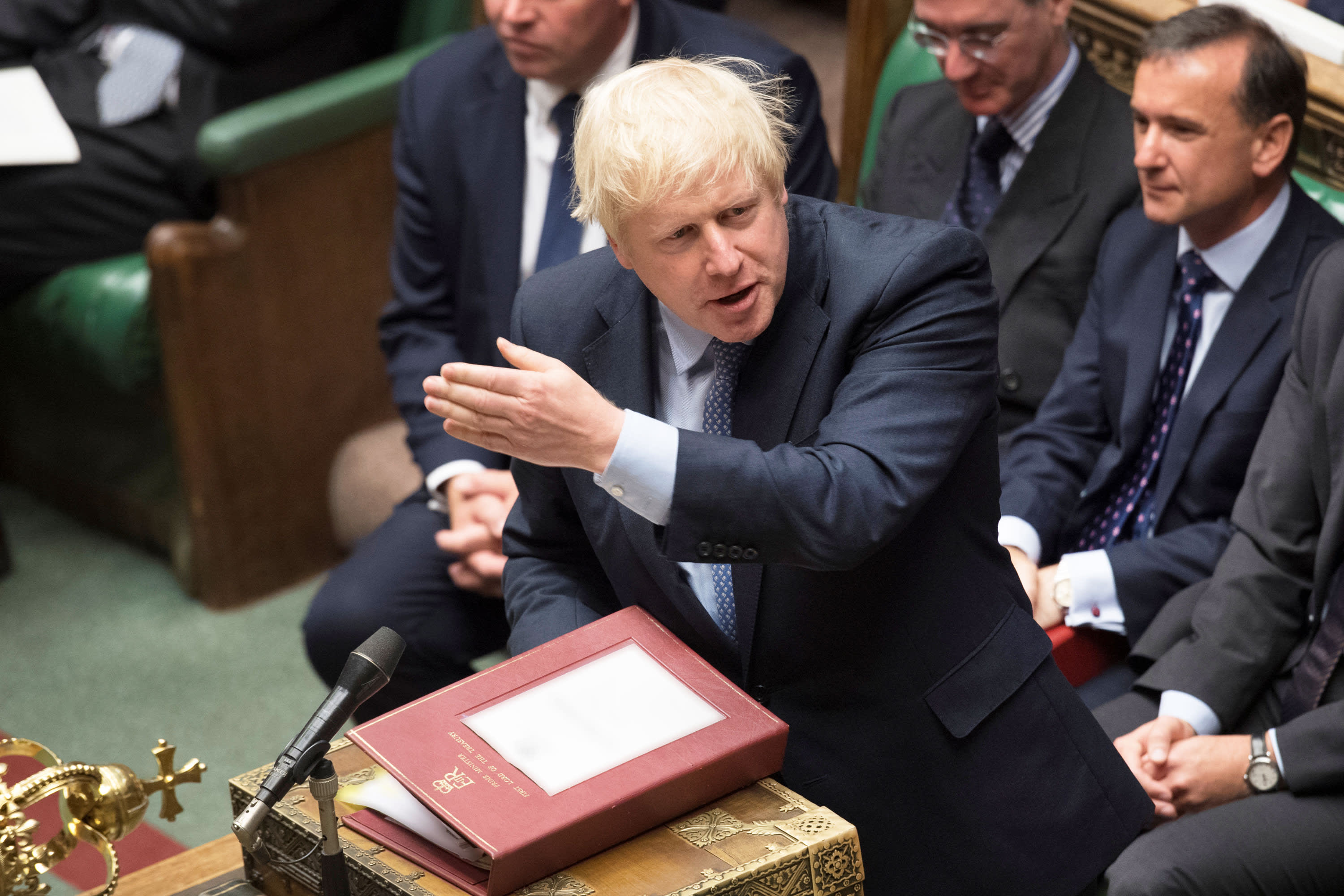UK’s Boris Johnson outlines tiered system of local lockdowns, dividing the country with stricter measures

Britain’s Prime Minister Boris Johnson speaks during Prime Minister’s Questions session in the House of Commons in London, Britain September 4, 2019.
Jessica Taylor | ©UK Parliament | Reuters
LONDON — The British government has outlined further restrictive measures for England, including a three-tier system of local lockdowns, as it attempts to curb a rapid increase in coronavirus infections.
Speaking to the House of Commons on Monday, Prime Minister Boris Johnson said he understood the frustration of those who had been “chafing” under the current restrictions. However, he added: “We can’t let the virus rip … I believe not to act would be unforgivable.”
He outlined a three-tier system of local Covid-19 alert levels — “medium,” “high” and “very high” — which will classify regions based on the severity of their infection rate, with differing levels of restrictions for each level.
The prime minster said the “medium” level applied to the majority of England, and encompassed the current restrictions which include banning groups of more than six people meeting up and forcing pubs and restaurants to close at 10 p.m.
The “high” level applied to the areas of England already in local lockdown, where residents are not allowed to mix with other households or meet up unless outside. Local lockdowns are currently in place across much of northern England, and some other areas where infection rates have soared since the national lockdown was lifted in the summer.
The “very high” level will be applied to areas where the transmission of the coronavirus is rising rapidly. In these areas, pubs and bars, gyms, betting shops and casinos will be closed. Johnson announced that, from Wednesday, the city of Liverpool would be placed on “very high” alert.
Shops, schools and universities will remain open, Johnson added.
The U.K. government has been criticized for the complexity of its local lockdown measures, which differ from area to area. It is hoping the new tiered system will help to simplify things.
In Scotland and Wales, meanwhile, pubs and restaurants have already been closed in some areas, and Wales has also imposed some restrictions on movement.
Local tensions
Monday’s measures are likely to heighten tensions between regional politicians and the national government in London, as local economies come under additional pressure and thousands of jobs are likely to be affected.
However, Johnson insisted he wanted to create the “maximum possible local consensus” behind the more severe local restrictions.
Johnson’s comments come after the U.K.’s leading medical experts held a press briefing Monday morning. They warned of increasing hospitalizations and said several “Nightingale” hospitals, built especially to deal with an influx of Covid-19 patients, had been put on standby.
UK at a ‘tipping point’
Jonathan Van-Tam, England’s deputy chief medical officer, issued a statement on Sunday warning British lawmakers that the seasons “are against us.”
“Sadly, just as night follows day, increases in deaths will now follow on in the next few weeks,” Van-Tam said.
Another leading government advisor, Peter Hornby, a University of Oxford professor of emerging infectious diseases, warned on Sunday that a second national lockdown was a possibility but should be avoided if at all possible.
Speaking to the BBC’s “Andrew Marr Show” on Sunday, Hornby said health services could be overwhelmed if measures were not taken to slow the spread of the virus. “We have a doubling time (in infections) of about eight to 15 days, so it is not long before those ICU beds could be full and we could be in a really difficult situation. So I am afraid we are going to have to make some very difficult choices and act very quickly.”
The U.K. has reported 606,447 cases of Covid-19 and 42,915 deaths since the pandemic began, according to a tally by Johns Hopkins University. On Sunday, 12,872 new cases were reported. Data through last Thursday showed the seven-day average number of cases stood at 14,391, up from 9,715 on the previous week.




